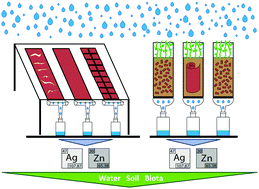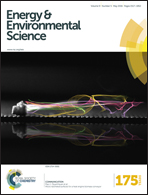Outdoor fate and environmental impact of polymer solar cells through leaching and emission to rainwater and soil†
Abstract
The emission of silver and zinc to the aqueous environment (rain, fog, dew) from polymer solar cells installed outdoors is presented. Studies included pristine solar cells and solar cells subjected to mechanical damage under natural weather conditions in Denmark. We find the emission of silver and zinc to the environment through precipitated water for damaged solar cells, and also observed failure and emission from an initially undamaged device in an experiment that endured for 6 months. In the case of the damaged cells, we found that the drinking water limits for Ag were only exceeded on a few single days. We also progressed our studies to include end-of-life management. To assess the implications of improper practices (uncontrolled disposal, landfilling) at the end-of-life, we buried different OPV types in intact and damaged forms in soil columns. In the case of high Ag emission (shredded cells), the potential for migration was confirmed, even though the soil was found to exhibit sequestration of silver. We conclude that recycling of Ag at the end-of-life is mandatory from an environmental point of view.


 Please wait while we load your content...
Please wait while we load your content...